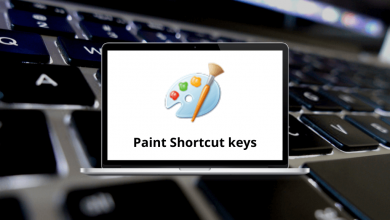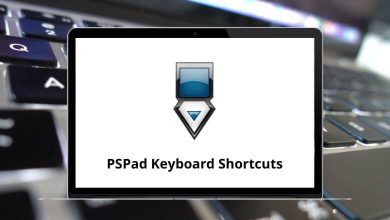What to Do When Your Computer Freezes?
We’ve all been there clicking around, trying to save work, switch tabs, or open a file when suddenly… your computer freezes. Everything stops. Panic sets in. Don’t worry this guide will walk you through exactly how to fix a frozen computer, step by step. Whether it’s a temporary hiccup or a recurring issue, I’ve got your back.
Table of Contents
- 1 First, Identify What Kind of Freeze You’re Dealing With
- 2 Quick Fixes to Try Right Away
- 3 If the System Is Completely Unresponsive
- 4 After Reboot: Check What Caused the Freeze
- 5 System Cleanup and Maintenance
- 6 Advanced Fixes for Persistent Freezing
- 7 Pro Tips to Prevent Future Freezes
- 8 When to Call a Pro
- 9 Final Thoughts
Let’s jump in and thaw that frozen machine.
First, Identify What Kind of Freeze You’re Dealing With
Before you start fixing things, it’s helpful to figure out what kind of freeze you’re experiencing:
- Temporary Freeze: Everything halts for a few seconds or minutes and then resumes.
- App-Specific Freeze: One program is stuck, but the rest of the system works fine.
- Full System Freeze: Keyboard, mouse, and screen are completely unresponsive.
Understanding the type helps you choose the right fix.
Quick Fixes to Try Right Away
Let’s start with the simple stuff. These quick actions often resolve the issue in seconds.
1. Wait a Moment
Yes, it sounds basic but sometimes your system is just overwhelmed. CPU spikes or background tasks (like updates) can temporarily freeze the interface.
What to do:
- Wait 30 seconds to 2 minutes.
- If things start moving again, you’re good. If not, move on.
2. Press Ctrl + Alt + Delete
This combo opens a special screen that lets you open Task Manager.
From there:
- Click “Task Manager”
- Look for programs labeled “Not Responding”
- Select them and click “End Task”
3. Unplug External Devices
Sometimes USB drives, webcams, or external hard disks cause conflicts.
Try this:
- Disconnect all external devices.
- Wait a few seconds.
- See if your system responds.
If the System Is Completely Unresponsive
Nothing works? Let’s go a bit deeper.
4. Force a Restart
If your mouse and keyboard are frozen too, you may have to reboot manually.
How to do it:
- Hold down the power button for 5-10 seconds.
- Wait a few moments.
- Press the power button again to turn it back on.
Warning: Force-restarting may cause unsaved work to be lost.
After Reboot: Check What Caused the Freeze
After restarting, it’s time to play detective. A one-time freeze is annoying, but if it keeps happening, you need to find the root cause. Here’s how:
5. Check for Overheating
Overheating is one of the most common causes of freezing.
Symptoms include:
- Fan running loudly
- Hot laptop base
- System shuts down after freezing
What you can do:
- Use tools like HWMonitor or Core Temp to check CPU/GPU temperatures.
- Clean out dust from vents.
- Use a cooling pad if you’re on a laptop.
6. Check RAM and CPU Usage
Apps that hog memory or CPU can lock up your system.
How to do it:
- Open Task Manager (Ctrl + Shift + Esc)
- Click on the “Performance” tab.
- Monitor CPU and Memory usage. If either is maxed out, note which app is responsible under “Processes.”
You can also learn more about system diagnostics in our blog on How to Run a Diagnostic Test on Windows.
System Cleanup and Maintenance
A clean PC is a happy PC. These tasks can reduce or prevent freezes.
7. Uninstall Problematic Apps
If your PC always freezes while using a specific app, that app might be the problem.
What to do:
- Go to Control Panel > Programs > Uninstall a program
- Sort by Install Date to see what’s new
- Remove suspicious or recently added software
If you’re dealing with antivirus conflicts, check out our detailed guide on how to uninstall Avast Free Antivirus.
8. Update Drivers
Outdated or corrupted drivers especially for graphics cards can cause freezing.
Steps:
- Press Windows + X → Choose Device Manager
- Right-click on your graphics, sound, and network adapters
- Select Update driver
Read More: 113 Windows Run Commands you should know
9. Run a Virus Scan
Malware can freeze your system by eating up resources.
Use:
- Windows Defender (built-in)
- Or a reputable antivirus tool
Make sure it’s updated before scanning.
Advanced Fixes for Persistent Freezing
Still freezing regularly? Here’s what else you can try.
10. Check for Disk Errors
Use Windows’ built-in tool:
Steps:
- Press Windows + E → Right-click your main drive (usually C:)
- Click Properties > Tools > Check
- Allow it to scan and fix errors
11. Update Windows
Freezing might be caused by bugs that have already been patched.
To update:
- Press Windows + I → Update & Security > Windows Update
- Click “Check for updates”
12. Check for Corrupted System Files
Use the System File Checker (SFC) tool:
Steps:
- Type cmd in Start Menu → Right-click Command Prompt → Run as Admin
- Type: sfc /scannow
- Hit Enter and wait for the process to complete
This checks and repairs system files that could cause freezing.
Pro Tips to Prevent Future Freezes
Let’s not just fix your computer we’ll make it more stable long-term.
Keep Software Minimal
Avoid installing too many programs that run in the background. Keep only what you actually use.
Upgrade RAM or SSD
If you’re running modern apps on an older machine, you might need a hardware upgrade.
Consider:
- Adding more RAM (8GB is the sweet spot for most users)
- Switching from HDD to SSD for much faster performance
If you’re using creative tools like Adobe Illustrator or Photoshop, RAM upgrades are a must for smoother multitasking.
Clean Up Startup Programs
Too many auto-starting programs slow down your system and can even cause freezes.
To disable them:
- Press Ctrl + Shift + Esc → Go to Startup tab
- Right-click and Disable unnecessary ones
We have a full guide on How to Add or Remove Startup Programs in Windows 11 you might find helpful.
When to Call a Pro
If you’ve tried everything above and your computer still freezes regularly:
- It could be a failing hard drive or motherboard.
- Or an issue that requires professional diagnostics.
Take it to a service center or contact manufacturer support if it’s under warranty.
Final Thoughts
Fixing a frozen computer doesn’t have to be stressful. With the right steps, you can get your system back on track in minutes or prevent the problem altogether.
From a simple Ctrl + Alt + Delete to more advanced tweaks like updating drivers or scanning system files, this guide covers all the bases.
And if your system is acting up while using heavy apps like Premiere Pro or After Effects, it’s likely time to upgrade your hardware or optimize your background processes.
READ NEXT:





